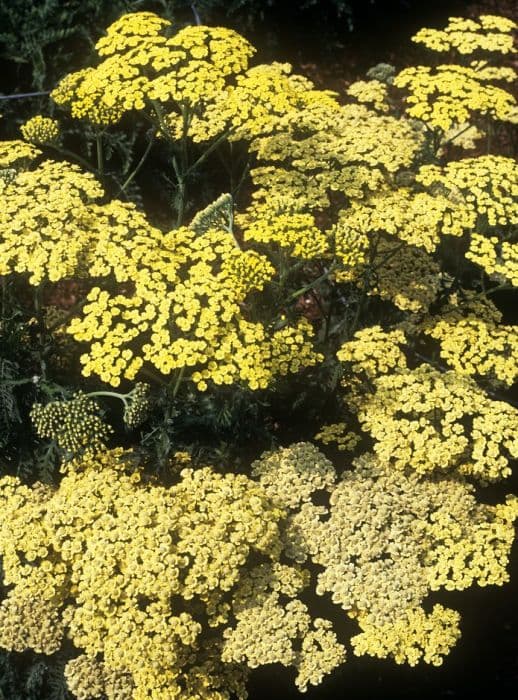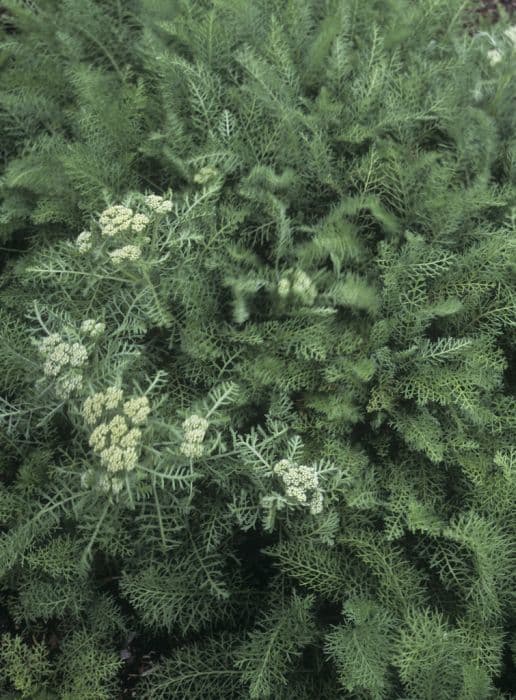Globe thistle Echinops bannaticus

ABOUT
Echinops bannaticus, commonly known as globe thistle, is a striking perennial plant characterized by its spiky, globe-shaped flowers. These flowers are a steely blue or violet color, and they sit atop sturdy, silvery-green stems that are adorned with deeply divided, spiny leaves. The leaves are often a gray-green hue and present a somewhat prickly texture. This plant features a basal rosette of leaves from which the flowering stems rise, ending in the signature spherical blooms. The contrast between the unique globular flower heads and the thistle-like foliage contributes to its appealing visual texture and makes it a notable presence in gardens. The globe thistle is a hardy plant with a distinctive appearance that offers visual interest and a touch of the exotic to planting schemes.
About this plant
 Names
NamesFamily
Asteraceae
Synonyms
Blue Globe Thistle, Globe Thistle, Blue Hedgehog Thistle
Common names
Echinops exaltatus, Echinops gmelinii, Echinops sphaerocephalus var. albidus.
 Toxicity
ToxicityTo humans
The plant known as blue globe thistle is not commonly listed as a toxic plant to humans. However, it is always best to exercise caution with plants and not ingest any parts of ornamental plants. If a person mistakenly ingests the blue globe thistle, there is no well-documented evidence of poisoning or specific symptoms related to this plant. But, like with any non-food plants, sensitive individuals might experience mild stomach upset if ingested. It's important to teach children not to eat plants and to consult with a medical professional or poison control center if ingestion occurs.
To pets
The plant known as blue globe thistle is not commonly recognized as toxic to pets. However, as with humans, it's prudent to prevent pets from ingesting plants not intended for consumption. If a pet ingests parts of the blue globe thistle, they might experience gastrointestinal upset, such as vomiting or diarrhea, due to irritation from plant material rather than toxicity. Monitoring your pet and contacting a veterinarian would be advisable should they consume this plant.
 Characteristics
CharacteristicsLife cycle
Perennials
Foliage type
Deciduous
Color of leaves
Green
Flower color
Blue
Height
2-5 feet (0.6-1.5 meters)
Spread
1-2 feet (0.3-0.6 meters)
Plant type
Herb
Hardiness zones
3-8
Native area
Southeast Europe
Benefits
 General Benefits
General Benefits- Aesthetic Appeal: Echinops bannaticus, commonly known as globe thistle, has striking globular blue flowers and spiky foliage that can add unique texture and interest to garden landscapes.
- Pollinator Attraction: The blooms of globe thistle are known to attract bees, butterflies, and other beneficial pollinators, supporting local ecosystems.
- Drought Resistance: Globe thistle is drought-tolerant once established, making it a suitable plant for xeriscaping and low-water-use gardens.
- Deer Resistance: Echinops bannaticus is rarely damaged by deer, which makes it an excellent choice for gardens in areas where deer predation is a problem.
- Low Maintenance: Given its tolerance for poor soil and low water requirements, globe thistle is considered low-maintenance, ideal for gardeners seeking minimal upkeep.
- Cut Flower Use: The flowers of globe thistle hold up well when cut and are often used in floral arrangements and dried bouquets.
 Medical Properties
Medical Properties- Anti-inflammatory properties: Echinops bannaticus has been reported to have anti-inflammatory effects, which could potentially help in reducing inflammation.
- Antimicrobial activity: Compounds isolated from this plant may have activity against certain bacteria and fungi, suggesting a potential role in preventing or treating infections.
- Antioxidant effects: The plant is believed to contain antioxidants, which can help in neutralizing harmful free radicals in the body.
- Hepatoprotective potential: There is some evidence to suggest that Echinops bannaticus may offer protective effects for the liver.
 Air-purifying Qualities
Air-purifying QualitiesThis plant is not specifically known for air purifying qualities.
 Other Uses
Other Uses- The spherical blue flower heads of the blue globe thistle can be dried and used in flower arrangements for a unique and long-lasting addition to home decor.
- The thorny and textured foliage can be used in garden design to add contrast and visual interest among other plants.
- Blue globe thistle can be planted to create a natural fence or barrier due to its spiky nature, deterring animals and intruders from entering certain areas.
- The plant's tolerance for poor soils makes it a suitable choice for rehabilitating and stabilizing disturbed soils in landscaping projects.
- With its deep root system, blue globe thistle can be used for erosion control on slopes or areas prone to soil degradation.
- Its nectar-rich flowers attract beneficial pollinators like bees, butterflies, and other insects, enhancing biodiversity in gardens and agricultural areas.
- The seeds of the blue globe thistle can be used as a food source for birds, particularly finches, during the winter months.
- Blue globe thistle can be used in xeriscaping, as it is drought-resistant and thrives in dry, arid environments, reducing the need for irrigation.
- Due to its distinctive appearance, it is sometimes used in fashion photography and avant-garde floral designs for a dramatic effect.
- The plant's unique aesthetic can be incorporated into themed gardens, such as gothic or fantasy-inspired landscapes, for its bold and spikey appearance.
Interesting Facts
 Feng Shui
Feng ShuiThe Globe Thistle is not used in Feng Shui practice.
 Zodiac Sign Compitability
Zodiac Sign CompitabilityThe Globe Thistle is not used in astrology practice.
 Plant Symbolism
Plant Symbolism- Attraction: Globe Thistle, as a unique and striking plant, symbolizes attraction due to its magnetic presence and interesting spherical bloom structure.
- Protection: Its thorny appearance gives it an association with protection, suggesting a defense mechanism against negative forces or energies.
- Independence: The Globe Thistle’s ability to thrive in poor soils and resist drought may lead to it symbolizing independence, resilience, and self-sufficiency.
- Mystery and Intrigue: The Globe Thistle’s distinctive look can be symbolic of the mysterious, often representing an unknown quantity or the unexpected.
- Vigilance: Its spiky nature may represent vigilance and a strong guardian, serving as a reminder to remain alert and wary.
 Water
WaterGlobe thistle should be watered deeply but infrequently, as it is drought tolerant once established. During the first growing season, to help the plant develop a deep root system, water once a week with about 1 to 1.5 gallons per plant, depending on soil type and climate. After establishment, reduce watering but make sure the soil does not dry out completely. Cut back on watering in the fall to prepare the plant for dormancy. Pay particular attention during extended periods of drought or extreme heat, and water the plant more frequently.
 Light
LightGlobe thistle thrives in full sun conditions, where it can receive at least 6 to 8 hours of direct sunlight each day. The best spot for planting globe thistle is an area that has clear exposure to the sun without any shade, as too much shade can lead to poor flowering and a leggy plant. Avoid locations where buildings or other plants cast shadows for the majority of the day.
 Temperature
TemperatureGlobe thistle can tolerate a range of temperatures but grows best in conditions between 60 and 75 degrees Fahrenheit. It can withstand minimum temperatures down to about -20 degrees Fahrenheit, making it suitable for cooler climates. However, it should be protected from extreme winter conditions where temperatures consistently fall below this range.
 Pruning
PruningPruning globe thistle is important to maintain its shape, encourage new growth, and improve its flowering. Deadhead spent blooms to encourage more flowers. Cut back the plant to the ground in late fall or early winter after the foliage and flowers have faded. Perform a thorough pruning once a year during this dormant period.
 Cleaning
CleaningAs needed
 Soil
SoilGlobe thistle (Echinops bannaticus) prefers well-drained soil with average fertility. A mix containing garden soil, compost, and coarse sand can provide good drainage and nutrients. The ideal soil pH for Globe thistle is between 6.0 and 7.5.
 Repotting
RepottingGlobe thistle, or Echinops bannaticus, should be repotted every 2-3 years. This frequency avoids crowding the roots and maintains soil quality.
 Humidity & Misting
Humidity & MistingGlobe thistle thrives best in average room humidity conditions; it does not require high humidity.
 Suitable locations
Suitable locationsIndoor
Place Globe thistle in bright light; water when soil feels dry.
Outdoor
Plant Globe thistle in full sun; well-drained soil is essential.
Hardiness zone
3-8 USDA
 Life cycle
Life cycleEchinops bannaticus, commonly known as blue globe thistle, begins its life as a seed, which when sown, germinates in a variety of conditions, although it prefers well-drained soil. After germination, the seedling develops into a rosette of spiky, gray-green leaves, staying in this vegetative state through its first year. In its second year, the globe thistle sends up sturdy, branching stems that can reach up to 3-4 feet tall, with the distinctive spherical, blue or violet flower heads forming at the tips. These blooms attract a variety of pollinators throughout the summer months before eventually producing seeds by late summer or early fall. Following seed set, the plant may die back, completing its lifecycle, but it can also behave as a perennial, regrowing from the base in subsequent seasons. In the latter case, the cycle of growth, flowering, and seed production repeats annually.
 Propogation
PropogationPropogation time
Spring-Early Summer
Propogation: The Globe Thistle, Echinops bannaticus, is most commonly propagated by seed. The ideal time for sowing Globe Thistle seeds is late winter to early spring, just after the last frost when temperatures start to warm. One can start the seeds indoors in seed trays or sow them directly outside in a prepared bed. If starting them indoors, the seeds should be lightly covered with soil and kept moist until germination, which usually takes about 2 to 4 weeks. When seedlings are large enough to handle, typically when they have a couple sets of true leaves, they can be transplanted to their final positions in the garden, spacing them about 18 inches (approximately 45 centimeters) apart to allow ample room for growth.









